
Pennsylvania’s Big Program to Save Rural Hospitals Gets Mixed Financial Reviews
Stable Payments Improved Margins But Not Liquidity, New LDI Analysis Finds
Population Health
News
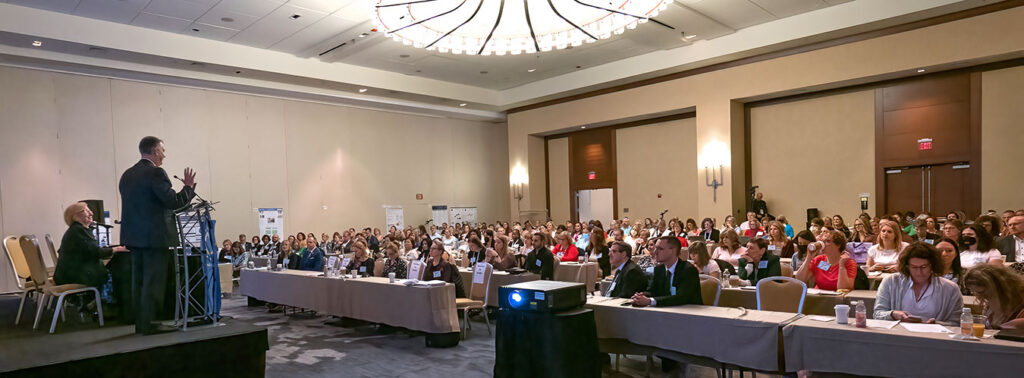
In its third year, Magnet4Europe (M4E), the largest hospital randomized controlled trial and implementation science project of its kind ever attempted, continues to roll forward despite collaboration travails posed by the pandemic and the extraordinary geographical spread of its work. In its largest in-person meeting since the pandemic hit, 300 university researchers, clinicians, and hospital managers from across North America and Europe came together in Philadelphia in October to discuss the latest developments in the four-year Magnet hospital project involving 132 facilities.
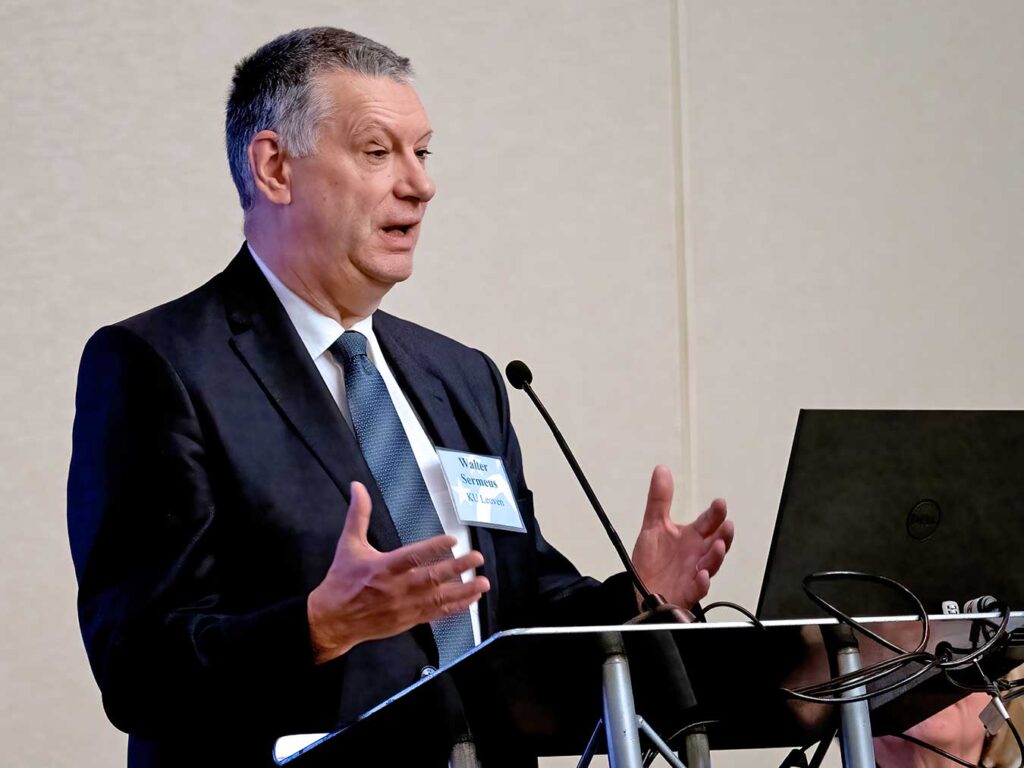
The four-year project is designed to improve overall hospital working environments in 65 facilities in England, Belgium, Germany, Ireland, Norway, and Sweden. Each of those European hospitals is “twinned” or partnered with a certified U.S. Magnet hospital that provides support and encouragement grounded in its own experience of becoming and operating as a Magnet facility. The second element of work is a randomized controlled trial to determine how well the model improves clinician wellbeing throughout the European hospitals.
The two-day M4E October gathering was part of a larger three-day American Nurses Association’s American Nurses Credentialing Center’s (ANCC) National Magnet Conference that filled Philadelphia’s Pennsylvania Convention Center and adjacent Philadelphia Marriott Downtown conference center with 13,000 attendees.
“Magnet is clearly a social movement in the US when that many nurses come together with great enthusiasm and energy to invest in strengthening the Magnet model and to celebrate its success at a time when hospital nurses are experiencing the most difficult period in my professional career with over half of hospital bedside care nurses experiencing high burnout,” said Linda Aiken, PhD, RN, of the University of Pennsylvania School of Nursing’s Center for Health Outcomes and Policy Research (CHOPR), who co-directs M4E with Walter Sermeus, PhD, RN, of Belgium’s Katholieke Universiteit Leuven (KUL).
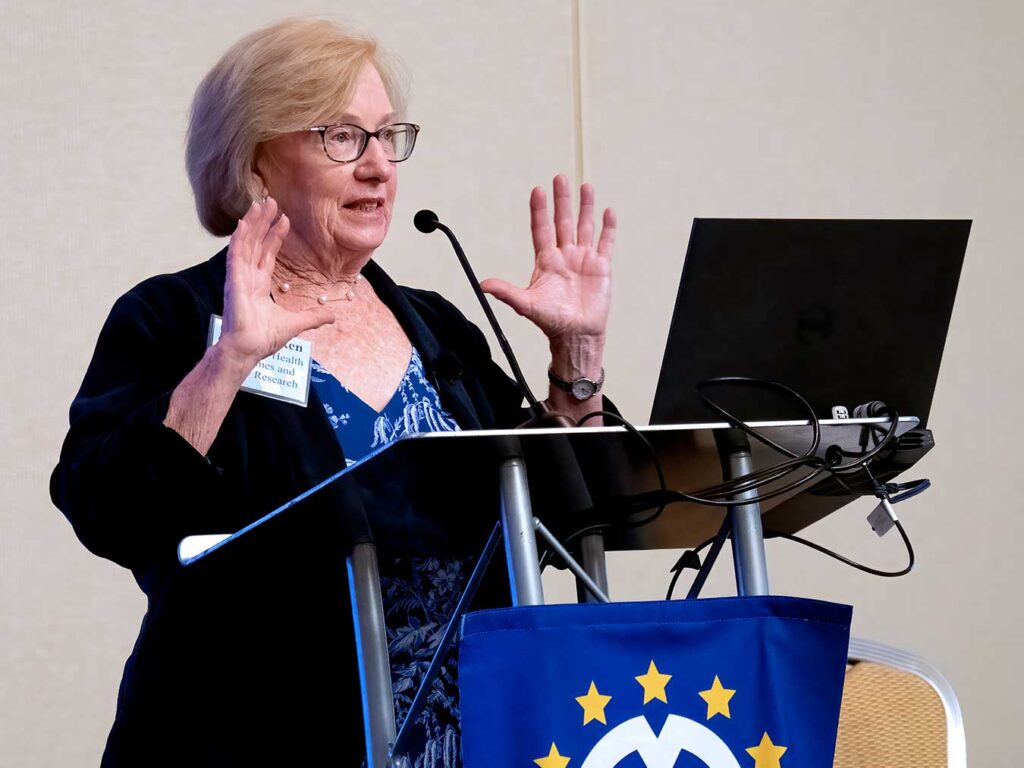
As part of the run-up to the October meeting, Aiken, Sermeus and 20 other scientists from the M4E Consortium authored an in-depth paper on the theoretical framework, conceptual design, and methodological approaches of the project that was published in BMJ Open in July.
Three top takeaways from the two-day M4E session in Philadelphia were:
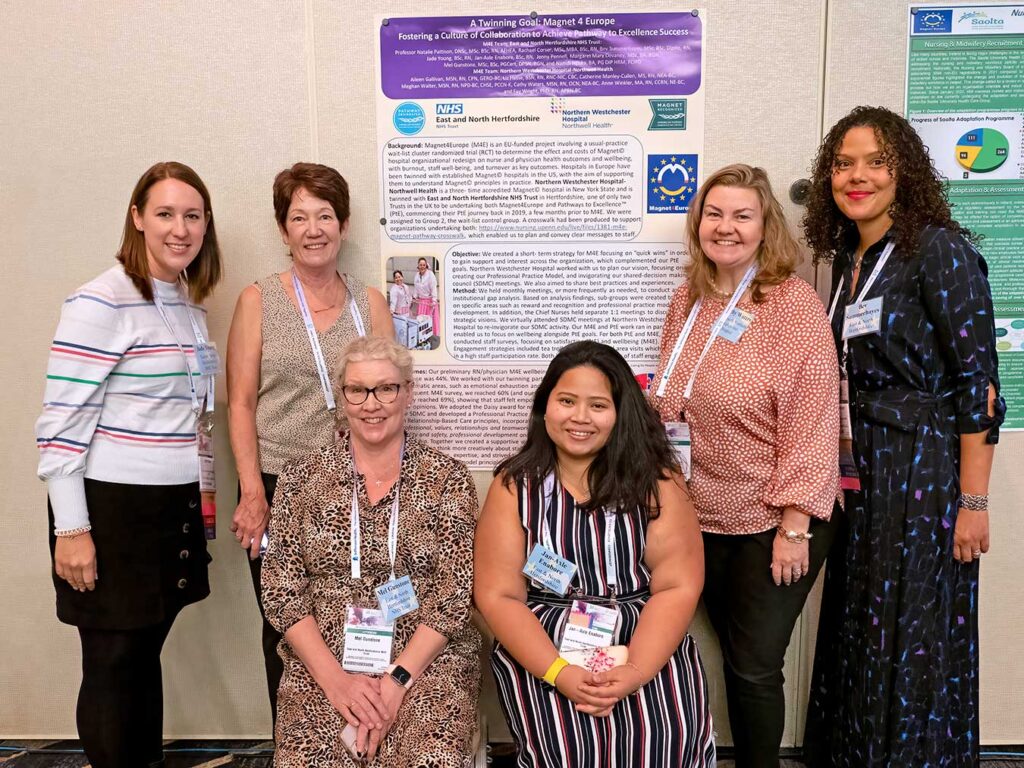
“Magnet is fostering optimism under the worst circumstances and the enthusiasm is infectious,” said Aiken. “We were surprised — and delighted — at how many European hospital partners traveled to this Philadelphia meeting and how many Europeans not at M4E hospitals asked to join our consortium to learn more. Given the financial pressures hospitals face post-COVID in both the U.S. and Europe, it’s a strong testament to the perceived value of the Magnet model that so many hospitals are approving international travel and other costs associated with implementing Magnet.”
In his opening welcome from the podium, Sermeus hailed the in-person gathering for restoring a semblance of normalcy and reminded the audience that beyond the organization and research protocols they were all involved in, they were also “taking care of our colleagues.” He said, “we’re talking about the lives and wellbeing of 50,000 doctors and nurses and it’s important that they have meaning and new energy to take care of our patients. This project is advancing that goal in a way beyond expectation.”
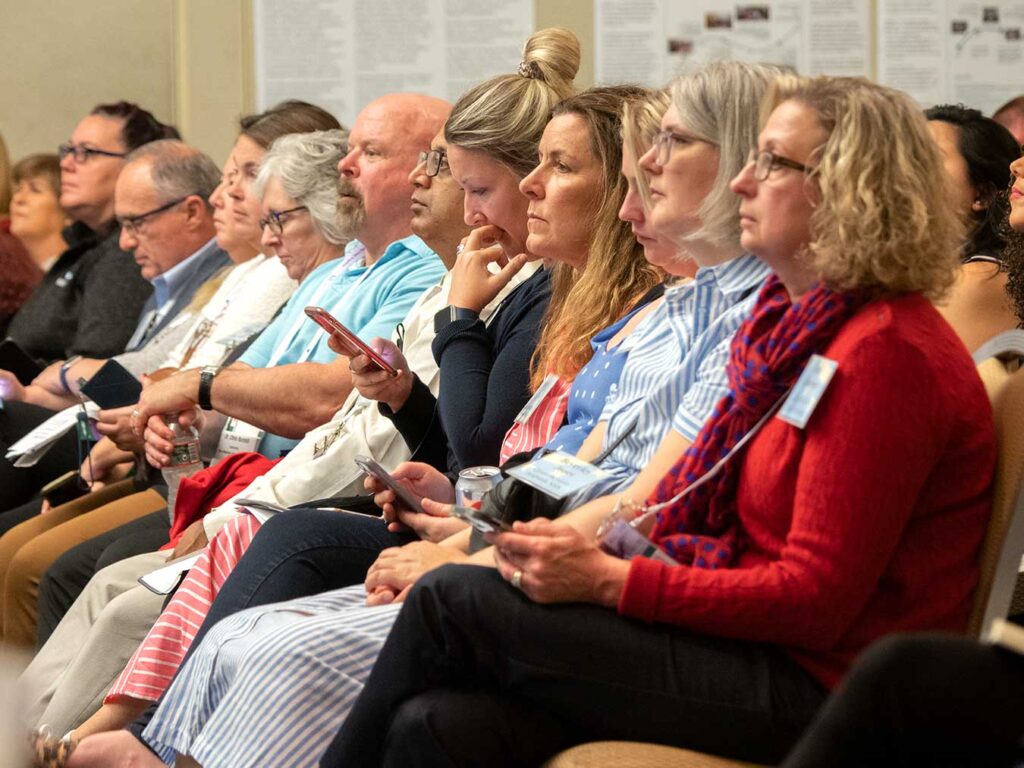
The Magnet program is essentially a framework and blueprint for the sweeping internal reorganization of a hospital’s clinical operations, staffing policies, internal communication practices, management philosophies, top-of-license teamwork integration, and problem-solving systems. The overall goal of the evidence-based intervention is to create and maintain a clinical working environment that systematically minimizes clinician stress and burnout and improves patient care.
The term “magnet” comes from a 1980s nursing colloquialism describing hospitals that have high quality working conditions that, like magnetism, attract and keep nurses who want to work in the better conditions there. Landmark academic studies in the 1980s found that aside from higher job satisfaction for clinicians, the working environment inside such hospitals produced lower levels of patient mortality. There are now 566 certified Magnet hospitals in the U.S., and 14 others outside the U.S. including two in Europe.
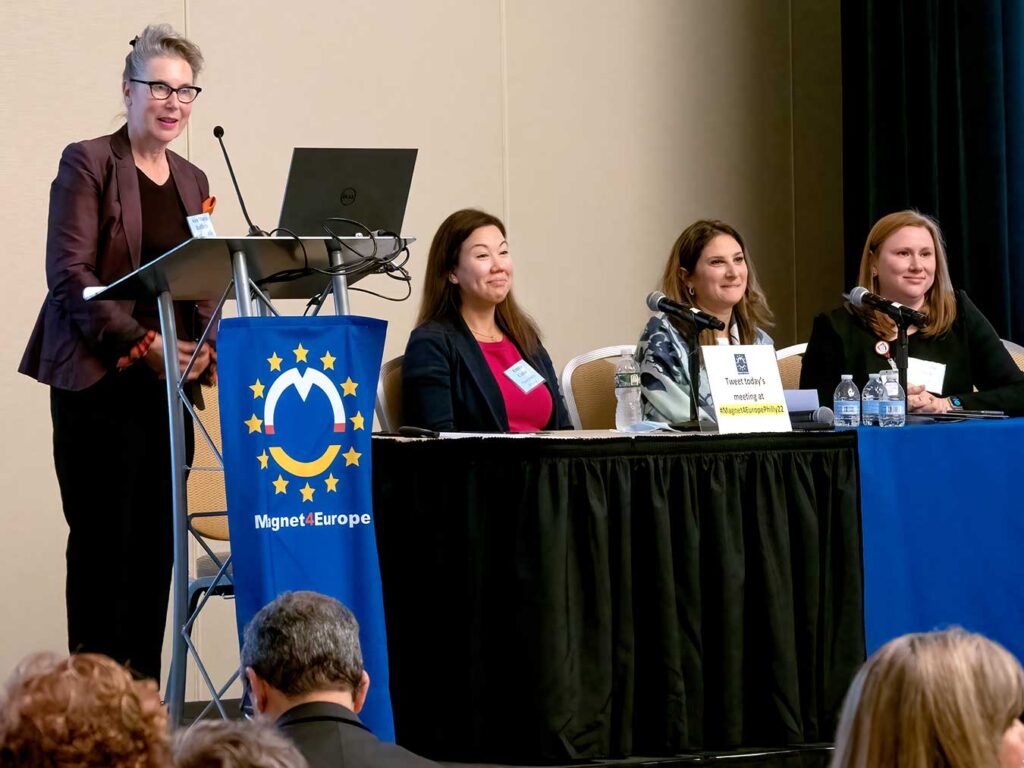
M4E, which took 10 years to organize before it launched in 2020, rose out of the larger U.S. Magnet Recognition Program founded in the early 1980s by the ANCC. Called “Improving Mental Health and Wellbeing in The Health Care Workplace,” the European Magnet initiative is funded through the European Union’s (EU) Horizon 2020 fund that supports research and innovation programs in health care.
Although M4E was scheduled to end in 15 months, the EU Commission recently completed its second review of the project and approved a six-month extension because of time lost due to COVID-19-related travel delays. The EU has also established a new funding program to address resilience and mental wellbeing throughout the healthcare workforce. It may offer a way to extend the M4E initiative even further to ensure the sustainability of the implemented Magnet changes.
“The Magnet model for transforming clinical work environments has become an enduring aspiration in Europe despite the formidable challenges of the COVID-19 pandemic,” explained Aiken. “Very few European hospitals that committed to the Magnet4Europe initiative three years ago have withdrawn. None of the 68 U.S. partners have withdrawn. There is growing interest in Magnet beyond the currently participating European hospitals — including additional hospitals in the participating countries.”
Aiken noted that the first two years of the initiative were focused on translating the principle of the U.S. Magnet Model into actionable strategic plans for implementing the Model in European institutions, many of which are organized differently from U.S. hospitals. The third and fourth year are focused on the actual implementation of those plans.
Much of the Philadelphia gathering was a learning collaborative focused on practical operational issues of a Magnet model implementation. A crucial element is the task of convincing a hospital’s top executives that Magnet principles can change the costs and quality of patient care. The panel discussion “Making the Business Case for Magnet” featured speakers recounting the ways their institution demonstrated Magnet’s value to top management.
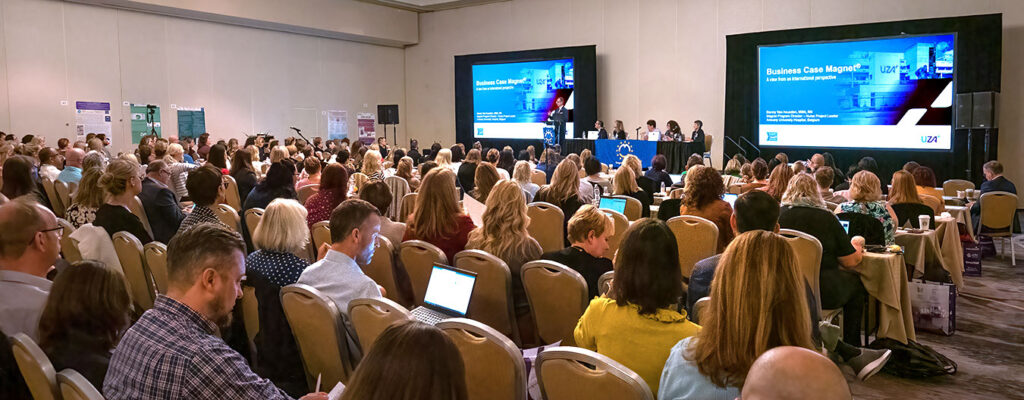
One of the presentations was by Terri Poe, DNP, RN, Chief Nursing Officer and Shannon Purcell, DNP, RN, Director of Nursing Excellence at the Magnet program at the University of Alabama at Birmingham Hospital that is twinned with the University Hospital Düsseldorf in Germany.
“When we started to think about the best ways to defend the Magnet model, we looked at our total patient falls per 1,000 patient days,” explained Purcell. “In terms of non-Magnet hospitals versus Magnet hospitals, we knew Magnet hospitals have less falls than non-Magnet hospitals and ours were less than other Magnet hospitals. We were able to show our CFO that Magnet is making an impact. When we decreased patient falls, we saved money because we decreased length of stay, extra surgeries, and eliminated other problems. Then, we looked at acquired pressure injuries in the same way. Ours were initially very high. We made a concentrated effort, even through the pandemic, to decrease pressure injuries and we achieved that, saving money, decreasing length of stay and improving patient outcomes. We even had three or four units where pressure injuries dropped to zero. Zero! That was, like, amazing information to take to the CFO.”
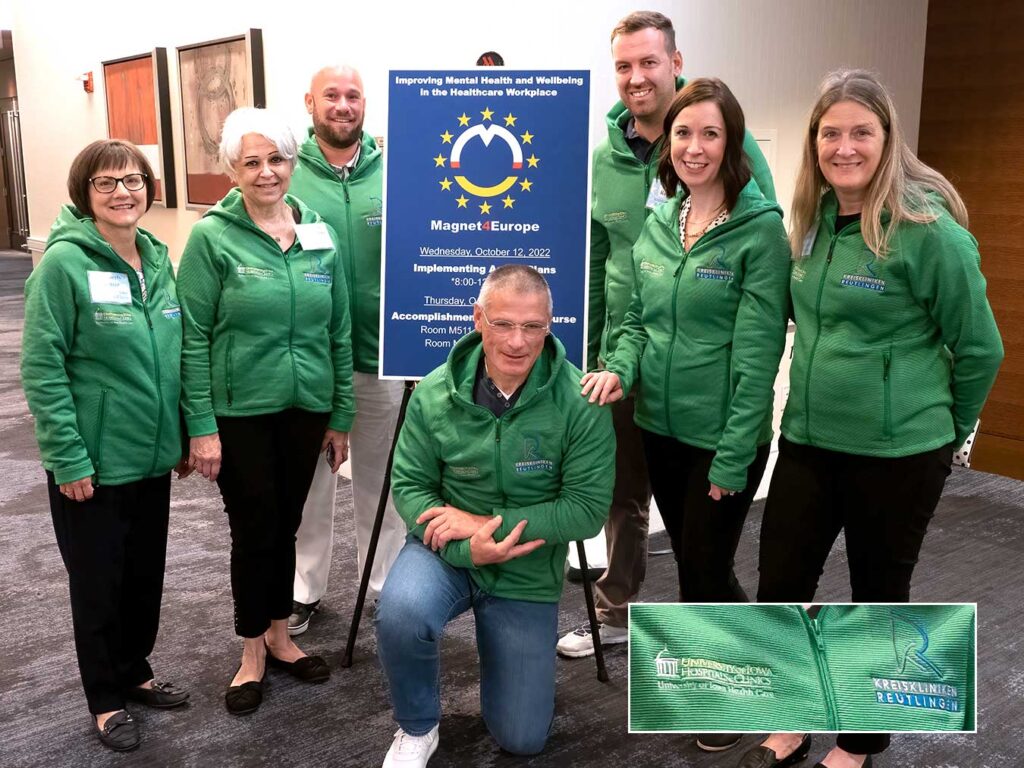
One of the key unanswered questions as M4E closes in on its fourth and final year of funding is what happens when the project funding ends? The consensus of participants is that achieving the full impact of the Magnet model across all the hospitals will take longer than that because of the broad, time-consuming organizational and cultural changes required. But there are growing indications that the twinned institutions may informally continue their work when the official program ends.
As Jonathan Drennan, PhD, RN, noted in his podium presentation, “We started off as colleagues but now have become friends.” He is Chair of Nursing and Health Services Research at the University College Cork (UCC), and head of the technology hub that provides M4E’s transcontinental communication and learning network.
“M4E hospitals don’t need EU support to continue to work together,” explained Aiken. “As you could see across the meeting room, these are very strong relationships that have been built over the last few years. We’ve found in previous M4E pilots that twinning relationships lasted years after the formal end of the initiative because the partners continued to get value from the collaboration.”

Indeed, the sense of camaraderie throughout the Philadelphia conference hall was effervescent. One twinned team arrived at the event in custom green M4E jackets embroidered with the logos of their two institutions: The University of Iowa Hospitals & Clinics, and the Kreiskliniken Reutlingen health system in Germany.
A judged poster session focused on each team’s description of the logistics, planning, analysis and implementation of their collaborative research work. The winning poster was “Collaborating Across Continent to Promote Colleague Compassion & Caring” from the teams at the Gloucestershire Hospitals National Health Service (NHS) Foundation Trust in England and the Lehigh Valley Hospital in Allentown, Pennsylvania.
“We are certainly committed to keeping in touch with our twinning partners after the M4E research project officially closes,” said Beverly Jones, RN, Lead Nurse for Continual Professional Development at Gloucestershire Hospitals, and a co-author of the winning poster. “We have a special relationship, where we share and learn together. Being able to extend invites to networks, events, and celebrations, enables us to keep up to date with global initiatives and best practices, and facilitate workplace improvements in ways that benefit both ourselves and our institutions.”
Asked what mattered most to her about the two-day M4E event, the nurse and sometimes-poet said “It was a networking opportunity to meet colleagues from the U.S. and five European countries that allowed for rich discussion. Being with a group of like-minded people, who want to facilitate positive practice environments, to support both colleagues and improve patient experience and outcomes, reinvigorates you to continually seek improvement and innovation.” This was the Haiku poem she wrote about the experience:
Invigorating
Celebrate, collaborate
Improvement networks


Stable Payments Improved Margins But Not Liquidity, New LDI Analysis Finds

LDI Senior Fellow Cited for “Significant Contributions” in Research

Outdated Laws Target Black and Queer Lives in Over 30 States, Fueling a Deadly Disease

Selected for Current and Future Research in the Science of Amputee Care

Research Memo: Delivered to House Speaker Mike Johnson and Majority Leader John Thune

Research Memo: Delivered to House Speaker Mike Johnson and Majority Leader John Thune